Chrysler 2008 Annual Report Download - page 125
Download and view the complete annual report
Please find page 125 of the 2008 Chrysler annual report below. You can navigate through the pages in the report by either clicking on the pages listed below, or by using the keyword search tool below to find specific information within the annual report.-
 1
1 -
 2
2 -
 3
3 -
 4
4 -
 5
5 -
 6
6 -
 7
7 -
 8
8 -
 9
9 -
 10
10 -
 11
11 -
 12
12 -
 13
13 -
 14
14 -
 15
15 -
 16
16 -
 17
17 -
 18
18 -
 19
19 -
 20
20 -
 21
21 -
 22
22 -
 23
23 -
 24
24 -
 25
25 -
 26
26 -
 27
27 -
 28
28 -
 29
29 -
 30
30 -
 31
31 -
 32
32 -
 33
33 -
 34
34 -
 35
35 -
 36
36 -
 37
37 -
 38
38 -
 39
39 -
 40
40 -
 41
41 -
 42
42 -
 43
43 -
 44
44 -
 45
45 -
 46
46 -
 47
47 -
 48
48 -
 49
49 -
 50
50 -
 51
51 -
 52
52 -
 53
53 -
 54
54 -
 55
55 -
 56
56 -
 57
57 -
 58
58 -
 59
59 -
 60
60 -
 61
61 -
 62
62 -
 63
63 -
 64
64 -
 65
65 -
 66
66 -
 67
67 -
 68
68 -
 69
69 -
 70
70 -
 71
71 -
 72
72 -
 73
73 -
 74
74 -
 75
75 -
 76
76 -
 77
77 -
 78
78 -
 79
79 -
 80
80 -
 81
81 -
 82
82 -
 83
83 -
 84
84 -
 85
85 -
 86
86 -
 87
87 -
 88
88 -
 89
89 -
 90
90 -
 91
91 -
 92
92 -
 93
93 -
 94
94 -
 95
95 -
 96
96 -
 97
97 -
 98
98 -
 99
99 -
 100
100 -
 101
101 -
 102
102 -
 103
103 -
 104
104 -
 105
105 -
 106
106 -
 107
107 -
 108
108 -
 109
109 -
 110
110 -
 111
111 -
 112
112 -
 113
113 -
 114
114 -
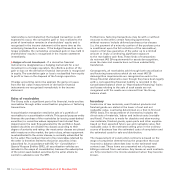 115
115 -
 116
116 -
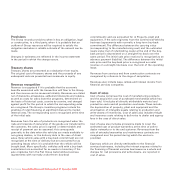 117
117 -
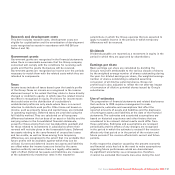 118
118 -
 119
119 -
 120
120 -
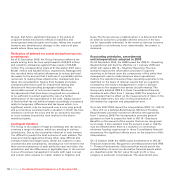 121
121 -
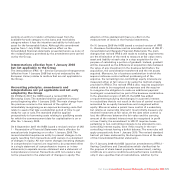 122
122 -
 123
123 -
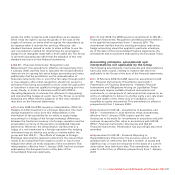 124
124 -
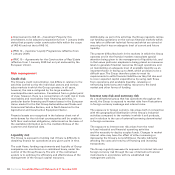 125
125 -
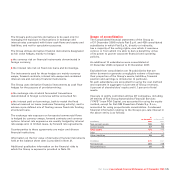 126
126 -
 127
127 -
 128
128 -
 129
129 -
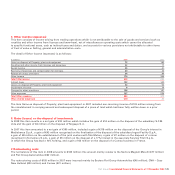 130
130 -
 131
131 -
 132
132 -
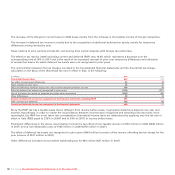 133
133 -
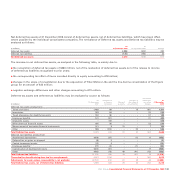 134
134 -
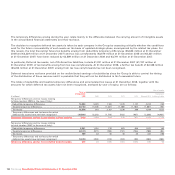 135
135 -
 136
136 -
 137
137 -
 138
138 -
 139
139 -
 140
140 -
 141
141 -
 142
142 -
 143
143 -
 144
144 -
 145
145 -
 146
146 -
 147
147 -
 148
148 -
 149
149 -
 150
150 -
 151
151 -
 152
152 -
 153
153 -
 154
154 -
 155
155 -
 156
156 -
 157
157 -
 158
158 -
 159
159 -
 160
160 -
 161
161 -
 162
162 -
 163
163 -
 164
164 -
 165
165 -
 166
166 -
 167
167 -
 168
168 -
 169
169 -
 170
170 -
 171
171 -
 172
172 -
 173
173 -
 174
174 -
 175
175 -
 176
176 -
 177
177 -
 178
178 -
 179
179 -
 180
180 -
 181
181 -
 182
182 -
 183
183 -
 184
184 -
 185
185 -
 186
186 -
 187
187 -
 188
188 -
 189
189 -
 190
190 -
 191
191 -
 192
192 -
 193
193 -
 194
194 -
 195
195 -
 196
196 -
 197
197 -
 198
198 -
 199
199 -
 200
200 -
 201
201 -
 202
202 -
 203
203 -
 204
204 -
 205
205 -
 206
206 -
 207
207 -
 208
208 -
 209
209 -
 210
210 -
 211
211 -
 212
212 -
 213
213 -
 214
214 -
 215
215 -
 216
216 -
 217
217 -
 218
218 -
 219
219 -
 220
220 -
 221
221 -
 222
222 -
 223
223 -
 224
224 -
 225
225 -
 226
226 -
 227
227 -
 228
228 -
 229
229 -
 230
230 -
 231
231 -
 232
232 -
 233
233 -
 234
234 -
 235
235 -
 236
236 -
 237
237 -
 238
238 -
 239
239 -
 240
240 -
 241
241 -
 242
242 -
 243
243 -
 244
244 -
 245
245 -
 246
246 -
 247
247 -
 248
248 -
 249
249 -
 250
250 -
 251
251 -
 252
252 -
 253
253 -
 254
254 -
 255
255 -
 256
256 -
 257
257 -
 258
258 -
 259
259 -
 260
260 -
 261
261 -
 262
262 -
 263
263 -
 264
264 -
 265
265 -
 266
266 -
 267
267 -
 268
268 -
 269
269 -
 270
270 -
 271
271 -
 272
272 -
 273
273 -
 274
274 -
 275
275 -
 276
276 -
 277
277 -
 278
278 -
 279
279 -
 280
280 -
 281
281 -
 282
282 -
 283
283 -
 284
284 -
 285
285 -
 286
286 -
 287
287 -
 288
288 -
 289
289 -
 290
290 -
 291
291 -
 292
292 -
 293
293 -
 294
294 -
 295
295 -
 296
296 -
 297
297 -
 298
298 -
 299
299 -
 300
300 -
 301
301 -
 302
302 -
 303
303 -
 304
304 -
 305
305 -
 306
306 -
 307
307 -
 308
308 -
 309
309 -
 310
310 -
 311
311 -
 312
312 -
 313
313 -
 314
314 -
 315
315 -
 316
316 -
 317
317 -
 318
318 -
 319
319 -
 320
320 -
 321
321 -
 322
322 -
 323
323 -
 324
324 -
 325
325 -
 326
326 -
 327
327 -
 328
328 -
 329
329 -
 330
330 -
 331
331 -
 332
332 -
 333
333 -
 334
334 -
 335
335 -
 336
336 -
 337
337 -
 338
338 -
 339
339 -
 340
340 -
 341
341 -
 342
342 -
 343
343 -
 344
344 -
 345
345 -
 346
346 -
 347
347 -
 348
348 -
 349
349 -
 350
350 -
 351
351 -
 352
352 -
 353
353 -
 354
354 -
 355
355 -
 356
356
 |
 |
Fiat Group Consolidated Financial Statements at 31 December 2008124
Improvement to IAS 40 –
Investment Property
: this
amendment, to be adopted prospectively from 1 January 2009,
states that property under construction falls within the scope
of IAS 40 and not that of IAS 16.
IFRIC 13 –
Customer Loyalty Programmes
(effective from
1 January 2009).
IFRIC 15 –
Agreements for the Construction of Real Estate
(effective from 1 January 2009 but not yet endorsed by the
European Union).
Risk management
Credit risk
The Group’s credit concentration risk differs in relation to the
activities carried out by the individual sectors and various
sales markets in which the Group operates; in all cases,
however, the risk is mitigated by the large number of
counterparties and customers. Considered from a global point
of view, however, there is a concentration of credit risk in trade
receivables and receivables from financing activities, in
particular dealer financing and finance leases in the European
Union market for the Fiat Group Automobiles and Trucks and
Commercial Vehicles Sectors, and in North America for the
Agricultural and Construction Equipment Sector.
Financial assets are recognised in the balance sheet net of
write-downs for the risk that counterparties will be unable to
fulfil their contractual obligations, determined on the basis of
the available information as to the creditworthiness of the
customer and historical data.
Liquidity risk
The Group is exposed to funding risk if there is difficulty in
obtaining finance for operations at any given point in time.
The cash flows, funding requirements and liquidity of Group
companies are monitored on a centralised basis, under the
control of the Group Treasury. The aim of this centralised
system is to optimise the efficiency and effectiveness of the
management of the Group’s capital resources.
Additionally, as part of its activities the Group regularly carries
out funding operations on the various financial markets which
may take on different technical forms and which are aimed at
ensuring that it has an adequate level of current and future
liquidity.
The present difficulties both in the markets in which the Group
operates and in the financial markets necessitate special
attention being given to the management of liquidity risk, and
in that sense particular emphasis is being placed on measures
taken to generate financial resources through operations and
on maintaining an adequate level of available liquidity as an
important factor in facing up to 2009, which promises to be a
difficult year. The Group therefore plans to meet its
requirements to settle financial liabilities as they fall due and
to cover expected capital expenditures by using cash flows
from operations and available liquidity, renewing or
refinancing bank loans and making recourse to the bond
market and other forms of funding.
Interest rate risk and currency risk
As a multinational group that has operations throughout the
world, the Group is exposed to market risks from fluctuations
in foreign currency exchange and interest rates.
The exposure to foreign currency risk arises both in connection
with the geographical distribution of the Group’s industrial
activities compared to the markets in which it sell products,
and in relation to the use of external borrowing denominated
in foreign currencies.
The exposure to interest rate risk arises from the need
to fund industrial and financial operating activities
and the necessity to deploy surplus funds. Changes in market
interest rates may have the effect of either increasing or
decreasing the Group’s net profit/(loss), thereby indirectly
affecting the costs and returns of financing and investing
transactions.
The Group regularly assesses its exposure to interest rate and
foreign currency risk through the use of derivative financial
instruments in accordance with its established risk
management policies.
